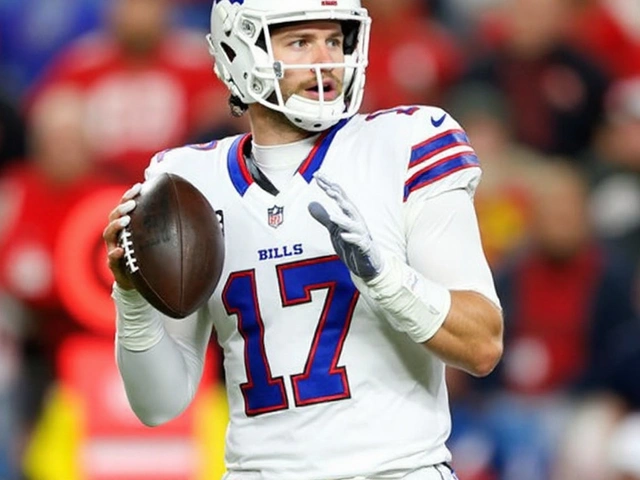Male Sports Highlights and Insights
When we talk about male, the term refers to men participating in competitive sports, covering everything from individual records to team championships, it’s more than just a label – it’s a whole ecosystem of events, training, and media coverage. Also known as men’s sports, the arena includes everything from golf’s elite match‑ups to football’s weekly showdowns.
One of the biggest showcases for Ryder Cup, a biennial golf competition pitting Europe against the United States features male golfers at the peak of their game. The recent Jon Rahm chip‑in that vaulted Europe to an 11.5‑4.5 lead illustrates how a single swing can shift momentum, proving that male athletes often decide outcomes in high‑pressure moments.
Across the Atlantic, the NFL, America’s professional football league has built a culture around Monday Night Football, a prime‑time broadcast that extends weekend excitement into the workweek. This tradition not only boosts viewership but also gives male players an extra stage to showcase stamina and strategy, linking the sport’s schedule to advertising revenue and fan engagement.
College football isn’t left out either. The debate over expanding the playoff to eight teams highlights how male college athletes crave more high‑stakes games, stirring conversations about fairness, revenue, and the sport’s future. Adding two extra slots would create more opportunities for under‑dog programs, increasing the overall excitement for fans and scouts alike.
Injuries remain a constant concern for male athletes. The recent case of Lamine Yamal, a teenage sensation sidelined by a groin issue after international duty, underscores the clash between club and country responsibilities. Coaches like Hansi Flick questioning player welfare reveal how medical decisions directly affect a male player’s career trajectory and team performance.
Betting and prediction apps have tapped into the appetite of male sports followers. Tools such as Bet Predictor offer statistical models that aim to outsmart odds, providing male bettors with data‑driven insights that can turn a hobby into a profit‑making venture. The rise of these apps shows how technology is reshaping how men consume and interact with sports.
Legendary figures continue to set benchmarks. Tom Brady’s relentless pursuit of more Super Bowl rings exemplifies the drive many male athletes share: chasing records until retirement feels optional. His quest fuels discussions about longevity, training regimes, and the mental edge required to stay at the top.
Media personalities also shape the narrative. Joe Namath’s short‑lived stint on Monday Night Football illustrates that fame on the field doesn’t always translate to a successful broadcasting career, especially when personal challenges interfere. These stories remind us that male sports figures wear many hats, each with its own set of expectations.
Below, you’ll find a curated list of articles that dive deeper into each of these topics. Whether you’re after a thrilling Ryder Cup moment, the latest NFL scheduling insight, or a debate on college playoff formats, the collection offers a mix of analysis, opinion, and behind‑the‑scenes looks at the world of male sports.
Does a WNBA player compare to a D1 college male player?
The article discusses the differences between male Division 1 college basketball players and women's WNBA players. It concludes that the physical and athletic differences between the two groups are significant, with the men having a clear advantage in terms of size, strength, and skill. However, the article argues that while the physical differences are noticeable, the women have proven to be just as competitive, and that their mental toughness and physical abilities should not be ignored. Ultimately, the article concludes that while the physical differences are clear, the women of the WNBA should not be underestimated.





